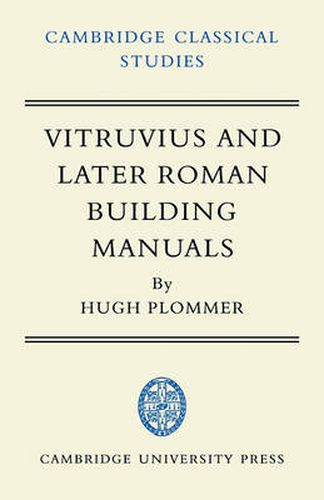Readings Newsletter
Become a Readings Member to make your shopping experience even easier.
Sign in or sign up for free!
You’re not far away from qualifying for FREE standard shipping within Australia
You’ve qualified for FREE standard shipping within Australia
The cart is loading…






An edition and translation of Faventinus’ Compendium of Vitruvius’ De architectura. There is an introductory account of the relationship between Vitruvius and the world of Faventinus and Palladius, both of whom made great use of Vitruvian material, Palladius apparently deriving it exclusively from Faventinus. But they did not borrow it slavishly. Both adapted it and added to it in the light of the practical concerns of their own day and technical developments not available to Vitruvius. Dr Plommer holds the view, orthodox since Nohl, that Faventinus wrote in the early fourth century AD and Palladius probably a century later. The text has a translation on facing pages and is followed by a commentary on the main points of interest in it. This is the first translation of the text to appear and the book will be of interest to historians of technology and of architecture in the ancient world, as well as to classicists.
$9.00 standard shipping within Australia
FREE standard shipping within Australia for orders over $100.00
Express & International shipping calculated at checkout
An edition and translation of Faventinus’ Compendium of Vitruvius’ De architectura. There is an introductory account of the relationship between Vitruvius and the world of Faventinus and Palladius, both of whom made great use of Vitruvian material, Palladius apparently deriving it exclusively from Faventinus. But they did not borrow it slavishly. Both adapted it and added to it in the light of the practical concerns of their own day and technical developments not available to Vitruvius. Dr Plommer holds the view, orthodox since Nohl, that Faventinus wrote in the early fourth century AD and Palladius probably a century later. The text has a translation on facing pages and is followed by a commentary on the main points of interest in it. This is the first translation of the text to appear and the book will be of interest to historians of technology and of architecture in the ancient world, as well as to classicists.